[row]
[column7]
Labour mobility occurs when certified workers from other jurisdictions are recognized without any additional training, experience, examinations or assessments.
[/column7]
[/row]
[row]
[column7]
Canada
In accordance with the labour mobility requirements in the Trade, Investment and Labour Mobility Agreement (TILMA) and the Agreement on Internal Trade (AIT), BC Crane Safety recognizes a worker as qualified to work in BC if they have a valid certificate from another Canadian regulatory authority where:
- A certificate is required under the Workers Compensation Act of BC and/or the Occupational Health and Safety Regulation;
- the competencies related to the out-of-jurisdiction certification are consistent with, and within the scope of, the competencies required for the same occupation in BC;
- the worker complies with the applicable BC registration process for obtaining a crane operator certificate issued by BC Crane Safety.
[/column7]
[column4 offset=”1″]
This Agreement applies to regulators in BC and Alberta that relate to trade, investment, and labour mobility. Regulators shall mutually recognize or otherwise reconcile their existing standards and regulations that operate to restrict or impair trade, investment or labour mobility.
One of the purposes of the Agreement is to eliminate or reduce measures that restrict labour mobility in Canada. To that end, the BC Government agreed to recognize workers already certified in another province/territory (i.e. certified, licensed, or registered by a recognized regulatory authority) as eligible for certification in BC.
[/column4]
[/row]
[row]
[column7]
USA
Details?
Other Countries
Details?
[/column7]
[/row]


